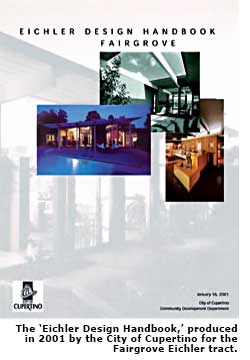Modern Preservation: Streetscape Smarts - Page 2
It is important to involve as many neighbors as possible in preservation efforts—not just a small cadre of true believers.
Friendly persuasion
Sometimes, educating neighbors may be all that a preservationist needs to do. Throughout Palm Springs, for example, homes in Alexander neighborhoods are being restored to their mid-century splendor thanks to a new, shared zeitgeist that modern is beautiful. What would happen to people who turned their homes into haciendas? "They'd throw eggs at your house," one resident of the Alexander's Vista Las Palmas area vowed. "You'd be excommunicated," said another.
Neither the city of Palm Springs nor any of its neighborhoods have architectural guidelines enforced by architectural review boards, says Ken Lyon, an associate city planner. "The people who are buying them," he says, "are buying them because of what they are."
Nor does the city currently have any historic districts, or planning rules specifically to protect modern homes—though an 18-foot height limit in many residential areas does prevent second stories, Lyon notes. Palm Springs, which has designated many individual buildings as historic, is developing procedures for declaring neighborhoods historic as well, says Diane Bullock, who staffs the city's Historic Site Preservation Board. They will publish a 'frequently-asked-questions' brochure on the topic soon.
Architectural review committees
Often, persuasion is not enough. It only takes one un-persuaded neighbor, after all, to turn an unpretentious glass-walled home into a Tuscan palace. That's when architectural review comes in handy.
Perhaps no modern neighborhood has a more effective system of architectural review than Lucas Valley, an Eichler tract of 450 homes surrounded by wooded hillsides in Marin County. Among the most pristine of all Eichler subdivisions, Lucas Valley seems like a Shangri-La, thanks to its well-preserved homes with their low-slung gables or dramatic A-frames that mirror the steep hillsides beyond. It could almost be a museum—except for the children on bikes and young couples walking their dogs.
Just to the east of the Lucas Valley development is another Eichler subdivision, Marinwood, which has its share of well-preserved homes—along with many that have been altered. The difference between the two neighborhoods? Only Lucas valley has strict controls, which have been in place for four decades.
The homeowners association's Lucas Valley Homeowners Association's Architectural Review Committee reviews proposed changes to houses, and enforces architectural guidelines that are distributed to all residents. To provide even greater force, proponents of preserving the area's look convinced Marin County in 1998 to designate the Lucas Valley development a 'special zoning district.'
Turning to the CC&Rs
Simply having an architectural committee is not good enough, however. The committee must be active—some Eichler and Streng communities have architectural committees on paper that haven't met in decades.
Cliff Meneken, a lawyer and former resident of Eichler's Terra Linda subdivision in Marin, has long been a proponent of rescuing from the dust heap long-forgotten CC&Rs (Covenants, Conditions, and Restrictions) that come, along with the deed, with many homes.

"The CC&Rs may preclude anyone from building a second story, or doing anything without the approval of the architectural review committee," he has noted. "If someone violates the provisions, a neighbor or the architectural review committee may sue in court, assuming it is done in a timely fashion."
The tactic, however, was never adopted by the neighborhood's association, the Santa Margarita Neighborhood Association, which instead convinced the city of San Rafael to protect the area from second-story additions through an overlay zone.
Strengthening architectural guidelines
Sometimes, rules designed to preserve a community can be too weak or have embarrassing blind spots.
In Brentwood's Crestwood Hills, for example, a community of modern homes designed in the 1950s by a team that included Eichler architect A. Quincy Jones, Cory Buckner, an architect who lives in the neighborhood, points to an instance where the architectural review committee allowed an owner to demolish a Jones-designed home. "The committee's argument was, 'Is demolition alteration?'" she said.
In fact, according to Allison Baratelli, a member of the Crestwood Hills architectural committee, the committee has no jurisdiction over demolitions—only over alterations. "If somebody wants to demolish a property, they don't have to come to us," she said.




